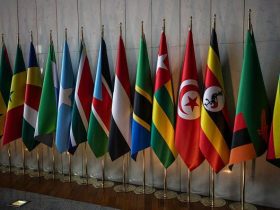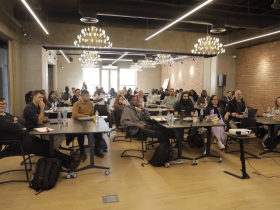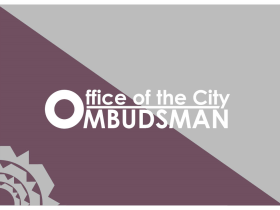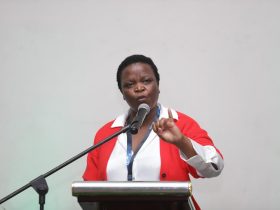‘While we certainly welcome the healthy dam levels, we cannot allow this to give us a false sense of water security for the future. To help secure Cape Town’s water future, the City’s Water and Sanitation Directorate is focusing on its New Water Programme plans to bring an extra daily 300 million litres of water online by 2030.
‘Our water resilience is important for our residents and for economic growth in Cape Town. For this reason, we need more than just dams to ensure our water supply is resilient for years to come as clearly highlighted by our customers during the drought, to help navigate future climate shocks.
‘The City cannot achieve this on its own so we thank our residents for contributing to building our water-future be it from paying their water bills to making water-wise decisions in their daily lives,’ said the City’s Mayoral Committee Member for Water and Sanitation, Councillor Zahid Badroodien.
Please see below for Frequently Asked Questions and Answers with Councillor Badroodien:
1. How does the City calculate a dam’s capacity of more than 100%, and what happens with the excess water once dams have reached their full capacity?
The excess percentages reflects the water depth flowing over the spillways at dams that translates to a volume of water temporarily stored behind the dam wall.
A percentage exceeding 100% indicates that the dam is overflowing. Water that overflows goes down the rivers and is important for the ecological functioning of these water courses.
2. Why are some dams fuller than others?
The amount of water in each of the dams depends on how much rainfall there has been in that geographical area, which varies according to the season, as well as the volume of the dam. This means some dams may spill over with water sooner than others.
3. Now that the dams are full, should residents still be mindful of how much water they use?
Yes, it’s important that residents remain mindful of their water use without the false misconception that rainy winter days will provide adequate supply for the full hydrological year. There has been an early season of rain since March. This above-average rainfall will serve to increase our water security going into next summer.
Residents are reminded to be water-wise at all times, regardless of the season or the status of the dams, etc, as this is a precious resource and it should not be wasted.The City has set a winter usage collective target of 800 million litres a day.
4. Can we expect to pay a lower water tariff now that Cape Town’s dams are full to capacity?
No. The lowest (no restriction) tariff has already been in effect from 1 November 2020.
The cost of providing the water service remains largely the same regardless of how much or how little water flows through the system and water residents use, or is in our dams.
5. What does my water tariff cover?
Currently residents pay on average between 5c – 8c a litre for Cape Town tap water.
The water tariff is made up of both a usage (or variable) charge, which depends on how much water is used, and a fixed basic charge.
This tariff is used to recover the cost for supplying a reliable water service. This includes the operational cost associated with the establishment of major infrastructure catchment and treatment of water, operation of the distribution systems as well as repairs and maintenance of infrastructure such as:
· 11 319km of water pipes
· 12 water treatment plants
· 180 reservoirs
· 92 water pump stations
These costs remain largely the same regardless of the dam levels and the volumetric usage and therefore, the tariffs are set to recover the cost of providing the service.
6. Cape Town’s dams are full to capacity. Why do we still need to pay a fixed basic charge as part of our water tariff?
The fixed basic charge is part of the total water tariff structure that needs to recover the cost of supplying a reliable water service.
It is needed so the City can continue to pay for and provide reliable water services to Cape Town. Should the fixed basic charge be removed, it will lead to a significant deficit and the standard usage part of the tariff will need to be substantially increased.
The fixed basic charge creates stability and reliability in the Water and Sanitation Directorate’s revenue forecast which is used to fund the directorates operating expenditure and the operational cost associated with the Capital Expenditure Programme. This includes projects such as the New Water Programme (NWP), the Water Pipe Replacement Programme and other projects that will help build a resilient service.
Note:
· The fixed basic charge remains in place. This charge is not a penalty or a surcharge.
· Indigent registered households do not pay the fixed basic charge part of the water tariff, and continue to receive an allocation of free water and sanitation.
7. What is the City doing to ensure that we have water in future?
Due to climate change, Cape Town has learnt that we cannot solely rely on dams for water security in future so the City is investing in its New Water Programme (NWP), which includes projects such as desalination, groundwater schemes and reuse. This is part of the City’s long-term Water Strategy to help reduce Cape Town’s dependence on rainfall and dam storage as our primary water supply to navigate future climate shocks and droughts.
We are working towards increasing supply by an extra 300 million litres of new water everyday by 2030. Each of the projects are at different stages of development. This is over and above the current interventions to ensure optimal water use and will assist in enabling Cape Town to become resilient to climate change. See: bit.ly/3Nc7WNk
While the City is investing in the NWP, residents are reminded to be water-wise at all times, regardless of the season or the status of our dams.
























Leave a Reply